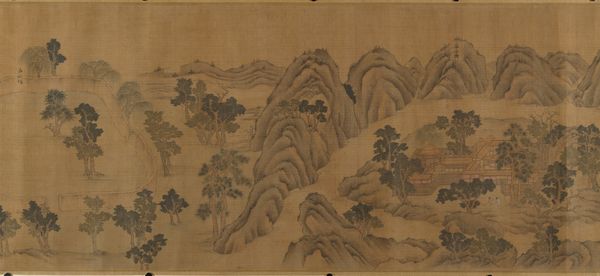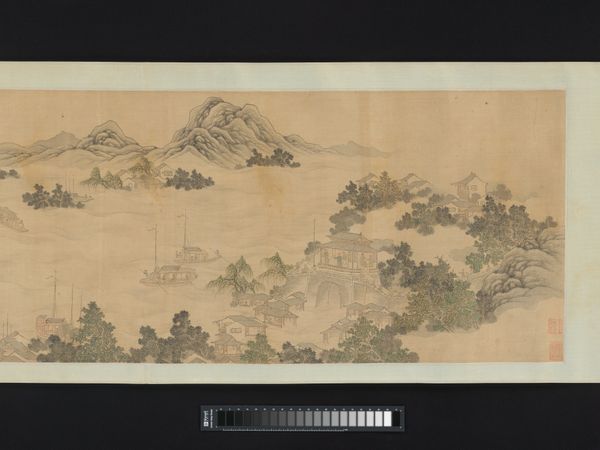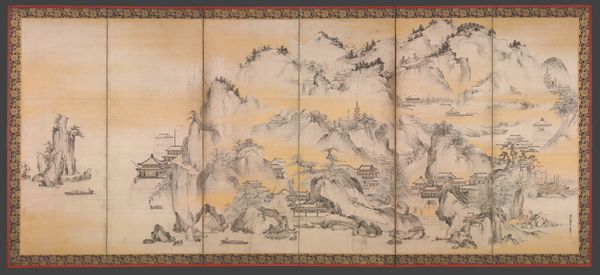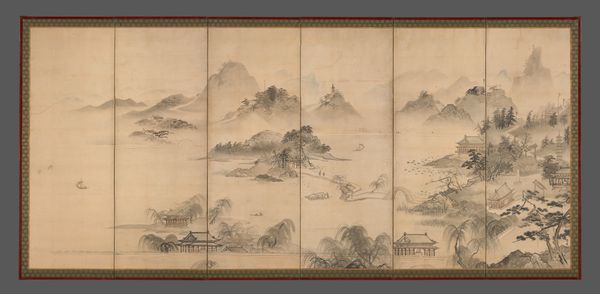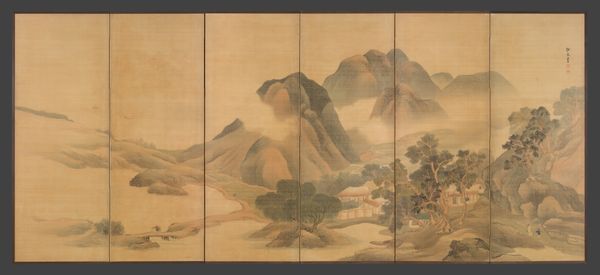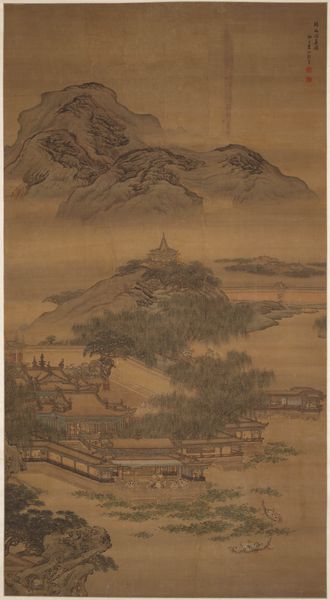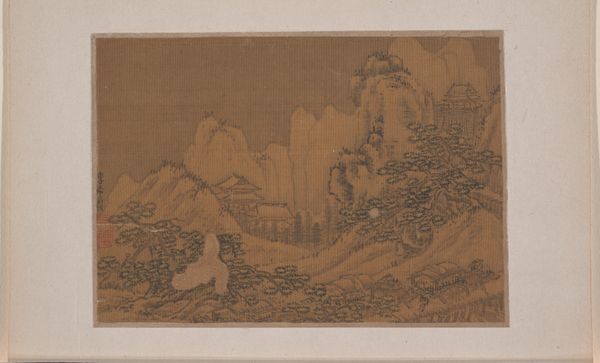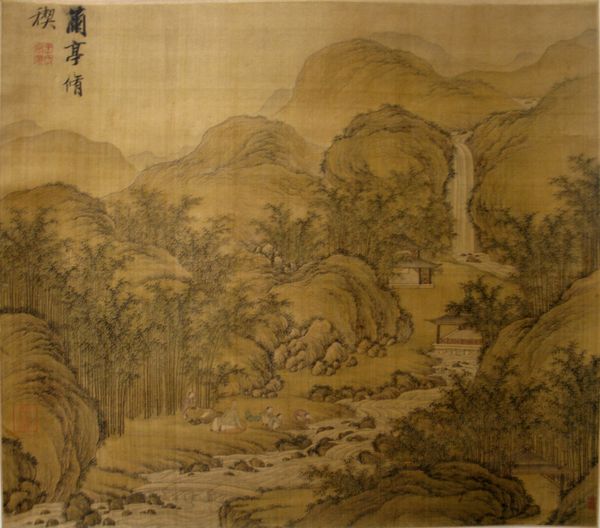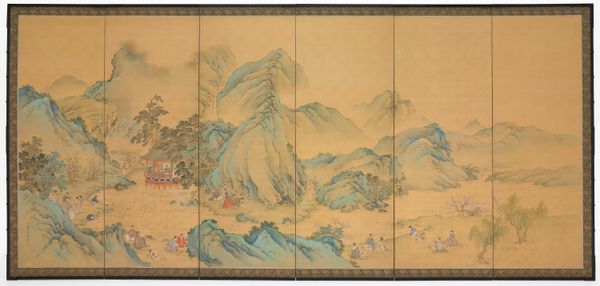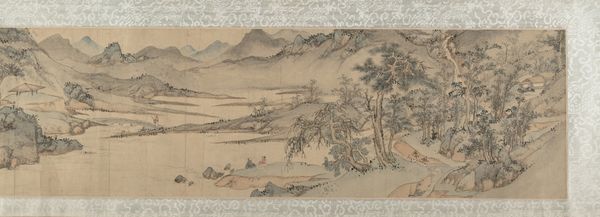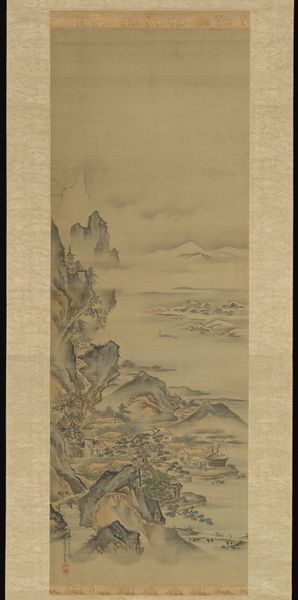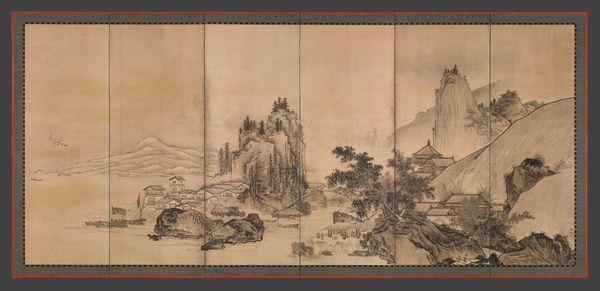
Dimensions: 21 1/4 × 39 in. (53.98 × 99.06 cm) (image)62 3/4 × 46 5/16 in. (159.39 × 117.63 cm) (without roller)
Copyright: Public Domain
Ike Gyokuran painted 'West Lake in Spring' on silk sometime in the mid-18th century. This work reflects the influence of Chinese literati painting, which was admired by Japanese intellectuals for its emphasis on personal expression and scholarly values. The painting’s tranquil landscape, with its muted colors and soft brushstrokes, evokes a sense of harmony and balance. This aesthetic aligns with the values of the Edo period, a time of relative peace and stability in Japan. Yet it also subtly critiques the rigid social hierarchies of the time. Gyokuran was a woman artist who ran a salon in Kyoto, an unusual position of cultural authority for a woman, and therefore her interest in the literati tradition can be seen as an endorsement of its more egalitarian and individualistic values. She also came from a merchant family which wasn't high in the social hierarchy. To understand the painting fully, we can consult historical documents, biographies, and social histories of the Edo period. By understanding the social and institutional context of the time, we can gain a richer understanding of the artist's intentions and the painting's meaning.
Comments
No comments
Be the first to comment and join the conversation on the ultimate creative platform.
